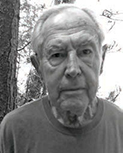
Joseph Schachter
FREE ASSOCIATION
Response to Joan Lentz
Joseph Schachter
Joseph Schachter, M.D., Ph.D., retired, was formerly Pittsburgh Psychoanalytic Center training and supervising analyst, former chair of the Committee for the Evaluation of Research Proposals of IPA and author of five books and more than 60 papers.

Joseph Schachter
I agree with Joan Lentz, in response to my TAP column about “free association” that “definition may be the key to our disagreement” [TAP 50/3 Fall 2016, page 10]. In fact, there are several disagreements. When Freud began analytic treatment with a patient, he asked the patient to free associate, to report whatever came to mind. Part of the reason Freud asked the patient to do so was to minimize the possibility of suggestion by the analyst to avoid the specter of a similarity with hypnotic treatment, then in very poor repute. Freud also asked the patient to lie on the couch because “I do not wish my expressions of face to give the patient material for interpretation…” (1912).
Freud did not want to manifest any reactions to the patient’s productions. He described the analyst’s task as maintaining “evenly-suspended attention,” and observed “this technique was the only one suited to my individuality” (1912). He was free to choose this way of initiating analytic treatment, because he was creating a new therapy, and since he had never been psychoanalyzed, he was not constrained by identification with his training analyst’s technique. Fred Busch (1995) like Freud, emphasizes “listening closely to the patient’s associations.” They agree that in initiating analytic treatment, the analyst listens carefully, but does not respond to the patient.
All candidates read, and have been influenced by how Freud initiated analytic treatment. In addition, since completion of a training analysis has become an educational requirement, candidates identify to varying degrees with the treatment style of their training analyst and supervisors. When I completed my training analysis, I tried to conduct my treatment exactly as I felt my analyst had treated me.
Lentz proposes that “modern usage emphasizes that free association involves all of the patient’s communications, verbal and non-verbal. It is whatever the patient brings to the session.” Her concept of free association, then, “refers to all of the patient’s behavior, not something the analyst has the patient do.” If free association refers to all of the patient’s behavior, then what does free association mean? She seems to be saying, as in Alice in Wonderland, that words mean what she says they mean.
Merton Gill wrote that a correct statement of Freud’s view of free association is whatever the patient says in response to the request to follow the fundamental rule—to tell us everything that is in his/ her mind. It is noteworthy that candidates, as distinct from other patients, have a professional motivation to accept the directive to free associate on initiating a training analysis, and to accept the analyst’s non-responsiveness.
Lentz writes that the patient’s associations provide a window into the interaction between the two parties. I believe, however, there is an absolutely critical distinction between Lentz’s use of the term “interaction” between patient and analyst, and my conception of patient-analyst interaction. Freud was observing and not responding, and similarly, Busch, was observing and not responding to the new analytic patient. If they had any emotional reactions to the patient, clearly these were not expressed. My conception of the term, patient-analyst interaction, refers to an emotional, overtly expressed response. If Freud and Busch reacted to their patients, these reactions deliberately were not expressed, and I would not characterize them as patient-analyst interactions since the patients were not consciously experiencing them. This significant distinction is based upon different models of psychoanalytic treatment, with Leo Rangell (1968) asserting that in the traditional model psychoanalytic treatment took place in the mind of the patient; while in the interpersonal/relational model psychoanalytic treatment took place in the interaction between patient and analyst.
As far as I know, we have no data about how many analysts at the start of treatment ask their patients to free associate, and how many use a different approach, such as, “Please, tell me what brings you here for help?” a query rarely asked of analytic candidates for obvious reasons. Further, there are no empirical data that assess whether free association is a more effective way of initiating analytic treatment than alternative approaches. It seems unlikely there will ever be such an empirical test because of the complicated methodological problems and prohibitive cost of such a study.
The uniqueness of each dyad makes it seem unlikely any one approach, such as free association, would be well-suited for all dyads. My concern about continuing to use free association as the framework is it may foster the analyst’s focus upon passive listening and minimize productive analyst-patient interactions. Without clarity about what the best approach is to the initiation of analytic treatment, instead of adopting the approach that was congenial to Freud, I suggest analyst and patient, together, consider several options and select what seems most appropriate to both. That would emphasize from the very beginning analytic treatment is a joint enterprise utilizing contributions from both patient and analyst.
My earlier suggestion that we retire the concept of free association is intended to inhibit the automatic use of free association with all new patients, and, instead, to encourage exploration and development of alternative conceptions of initiating analytic treatment. New analytic patients come in all sizes and shapes, and it would be a shame if we only had one approach to initiating analytic treatment that would have to fit all.
I would like to thank Judith S. Schachter, M.D., for her valuable suggestions and editorial comments.